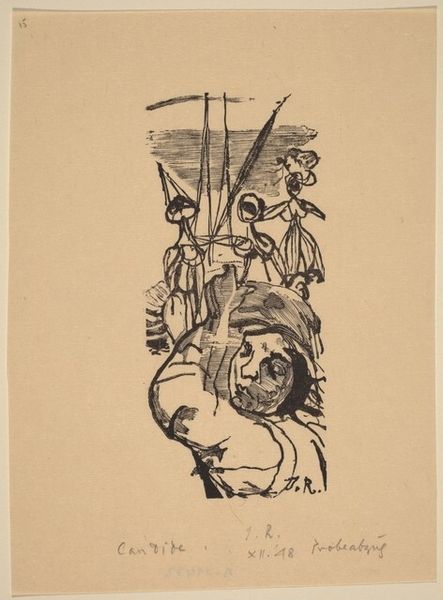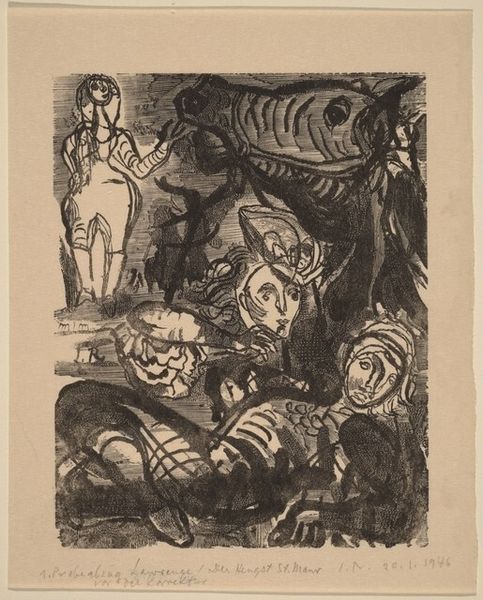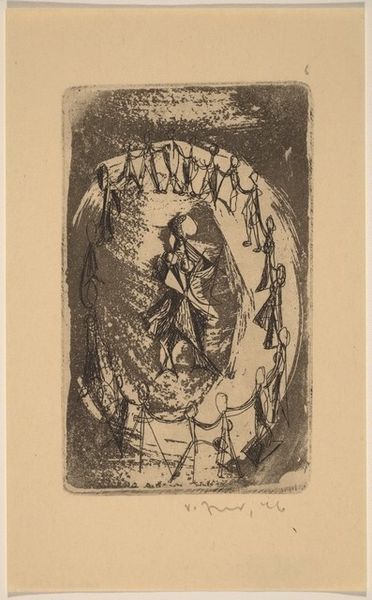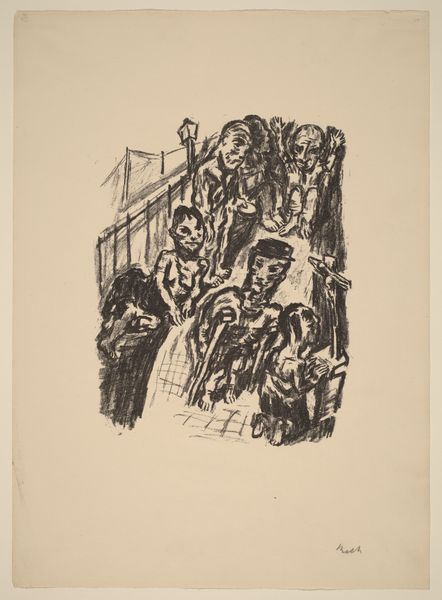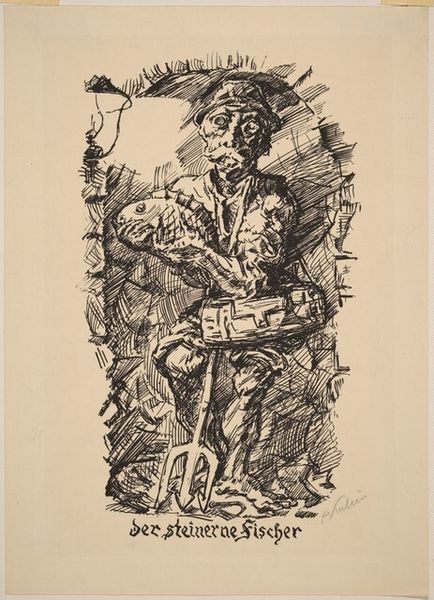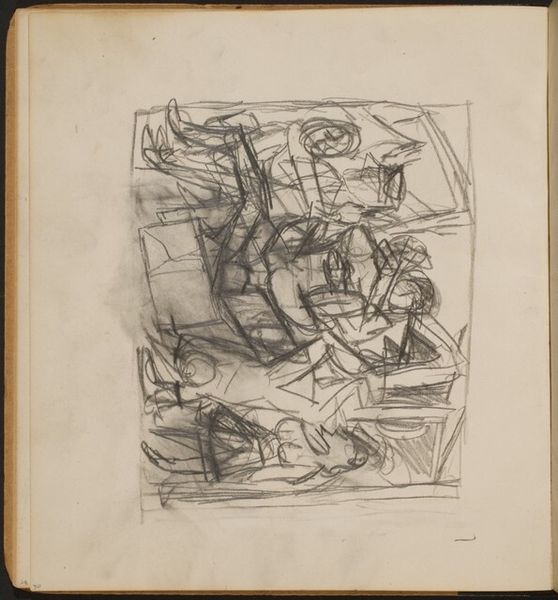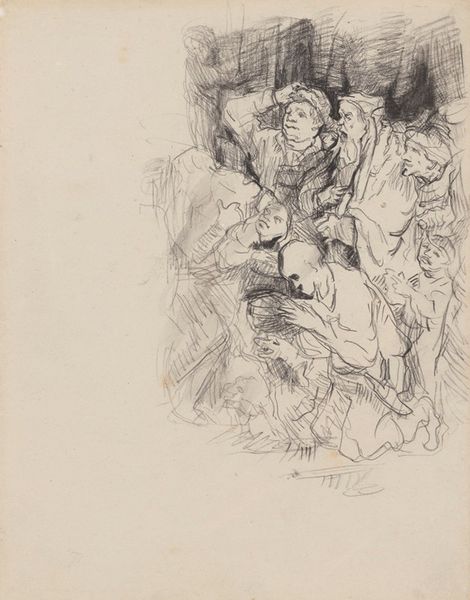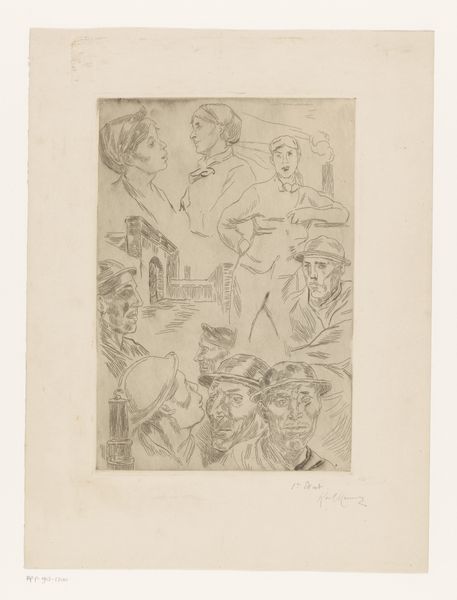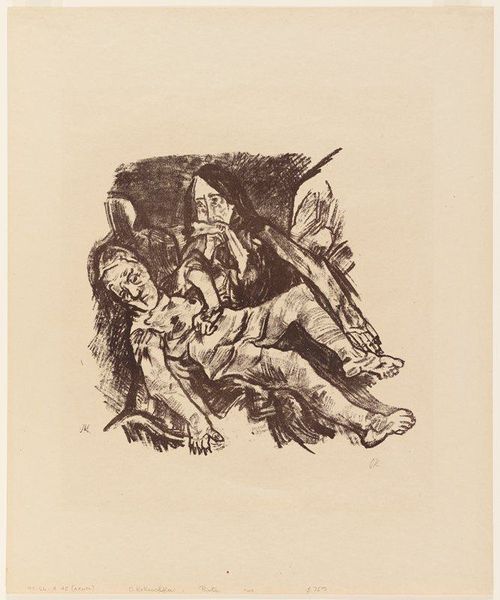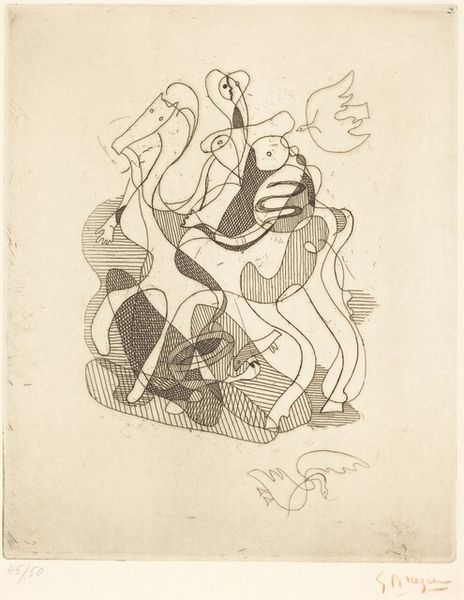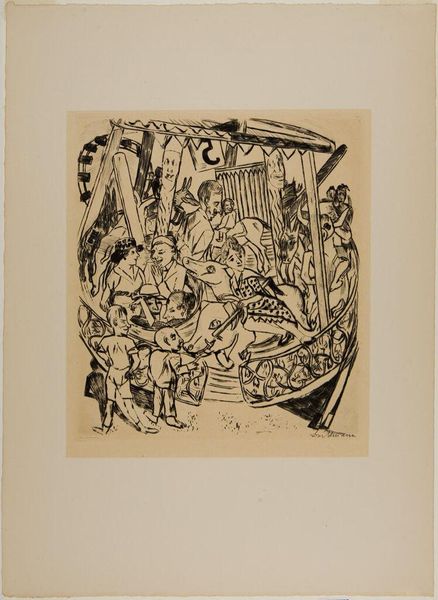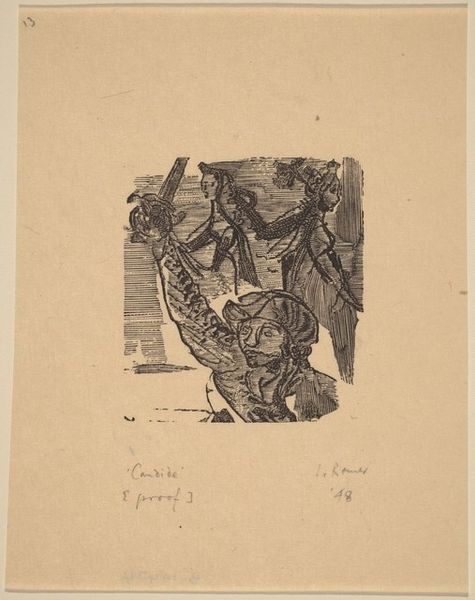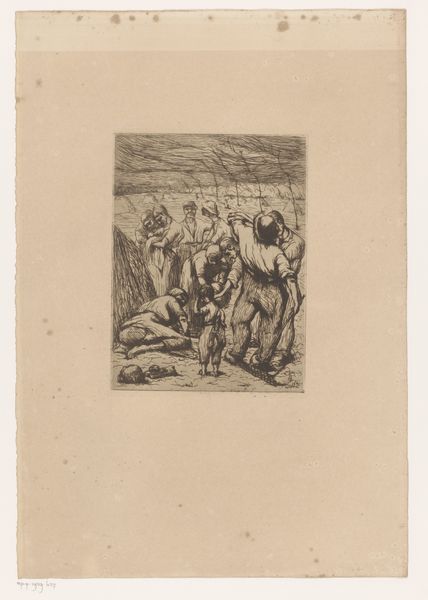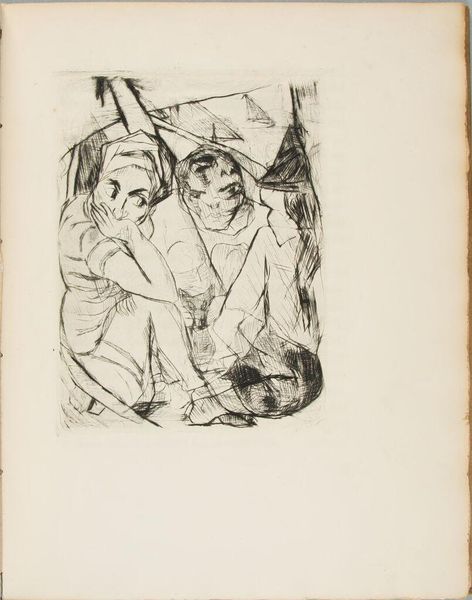
print, etching
#
narrative-art
# print
#
etching
#
german-expressionism
#
figuration
#
expressionism
#
history-painting
Dimensions: plate: 19.8 x 20 cm (7 13/16 x 7 7/8 in.) sheet: 37.1 x 29 cm (14 5/8 x 11 7/16 in.)
Copyright: National Gallery of Art: CC0 1.0
This is Karl Jacob Hirsch's "Verspottung" created in 1923, an etching depicting the mocking of a bound figure reminiscent of the "Ecce Homo" motif. Here, Hirsch evokes a powerful symbol of sacrifice and suffering, as the central figure is tightly bound, drawing parallels to Christ's Passion. Consider the history of this imagery; the "Ecce Homo" scene, where Christ is presented to the crowd, has been depicted countless times throughout art history, each era imbuing it with new significance. Over time, the figure of the bound individual has become a potent symbol of human suffering, injustice, and the vulnerability of the individual against oppressive forces. The way the crowd is clustered around the bound figure, jeering and pointing, speaks to the human capacity for cruelty and the psychological dynamics of mob mentality. This image touches on a primal, collective fear of persecution. The cyclical recurrence of such scenes throughout history—whether in religious, political, or social contexts—suggests a deep-seated, unresolved tension within the human psyche. It’s a motif that continues to resurface, evolving with each retelling, yet always echoing the same fundamental themes.
Comments
No comments
Be the first to comment and join the conversation on the ultimate creative platform.
